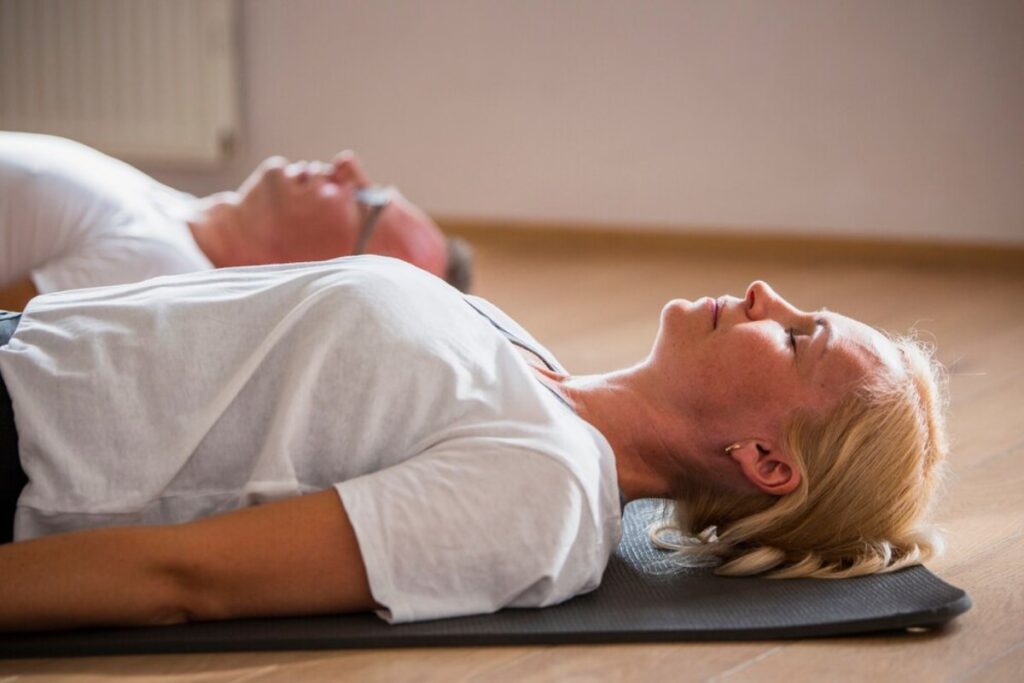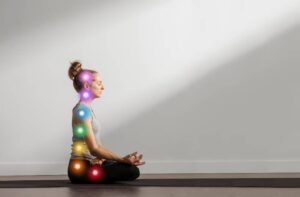The Yoga Blogs

Restorative Yoga Poses for Mental Refreshment
Ever feel like your mind just won’t stop churning? You’re stressed from work or personal obligations, or just the buzzing of a busy life. If you’re looking for a soft reset for your mind, restorative yoga might be the move.
It’s not just stretching; restorative yoga is deeply relaxing. It aids in relaxing the nervous system, reducing stress and generating mental refreshment. In this article, we are going to take a look at the science of this calming yoga style and talk you through poses that help you regain your centre.
What Is Restorative Yoga?
Restorative yoga is a slow, meditative practice where poses are held longer, often using props like blankets and bolsters. Unlike more active yoga styles, restorative yoga allows your body to relax fully into each pose.
The Science Behind the Calm
This type of yoga activates the parasympathetic nervous system, known as the “rest and digest” system. A study in the Journal of Alternative and Complementary Medicine found that restorative yoga significantly lowers cortisol, the stress hormone. This helps your body achieve deep relaxation.
When your body feels safe and supported, your mind can relax too. That’s why restorative yoga is often recommended for anxiety, depression, burnout, or the daily grind.
Benefits of Restorative Yoga for Mental Clarity
Practising restorative yoga regularly offers mental and emotional benefits:
- Reduces stress and anxiety by calming the nervous system.
- Improves focus and clarity by quieting mental chatter.
- Enhances emotional regulation through mindfulness.
- Encourages better sleep by calming the body and mind.
- Fosters a deeper mind-body connection.
In short, restorative yoga provides a mental reset, allowing you to unplug from external noise and reconnect with yourself.
Setting the Scene for Your Practice
Before starting, create a calming space to enhance your experience:
- Find a quiet, dimly lit area where you won’t be disturbed.
- Use soft props like bolsters, cushions, or folded blankets.
- Consider gentle background music or nature sounds.
- Wear comfortable, warm clothing.
- Set aside at least 30–60 minutes of uninterrupted time.
Restorative Yoga Poses for Mental Refreshment
Here are some effective yoga for relaxation poses you can practice at home to invite mental refreshment and clarity.

1. Supported Child’s Pose (Balasana)
This nurturing pose relieves tension in your back, shoulders, and mind.
How to do it:
- Kneel on the mat with your big toes touching and knees apart.
- Place a bolster or blankets between your knees.
- Lower your torso onto the bolster, turning your head to one side.
- Let your arms rest alongside or hug the bolster.
- Stay for 5–10 minutes, switching head sides halfway.
Why it works: It symbolises surrender and creates a sense of safety.
2. Legs Up the Wall (Viparita Karani)
A favourite among yogis for its calming, grounding effect.
How to do it:
- Sit next to a wall, then lie back and swing your legs up.
- Use a folded blanket under your hips for comfort.
- Relax your arms by your sides, palms facing up.
- Close your eyes and stay for 10–15 minutes.
Why it works: It improves circulation and calms the nervous system.
3. Reclining Bound Angle Pose (Supta Baddha Konasana)
This pose opens the heart and hips, encouraging emotional release.
How to do it:
- Sit with the soles of your feet together and knees falling outward.
- Lie back on a bolster or pillow.
- Support your thighs with cushions to avoid strain.
- Rest your hands on your belly or by your sides.
- Hold for 10–15 minutes.
Why it works: It opens the chest and relaxes the lower body for a full-body release.
4. Supported Bridge Pose (Setu Bandhasana)
A gentle backbend that stimulates the parasympathetic response.
How to do it:
- Lie on your back with knees bent and feet hip-width apart.
- Lift your hips and place a block or bolster under your sacrum.
- Relax fully on the support.
- Stay for 5–10 minutes, breathing deeply.
Why it works: It balances energy while calming an overactive mind.
5. Reclined Twist (Supta Matsyendrasana)
Twists help detoxify the body and release emotional tension.
How to do it:
- Lie on your back and draw your knees to your chest.
- Drop both knees to one side, keeping your shoulders grounded.
- Place a cushion between your knees if needed.
- Turn your head gently in the opposite direction.
- Hold for 3–5 minutes on each side.
Why it works: Twisting massages internal organs, aiding digestion and detox.

6. Corpse Pose (Savasana) with Support
The ultimate pose for integration and deep rest.
How to do it:
- Lie flat on your back with arms and legs comfortably spread.
- Use a folded blanket under your head and knees for extra comfort.
- Cover yourself with a blanket if cool.
- Close your eyes and relax for 10–20 minutes.
Why it works: This simple pose allows your body and mind to process the practice’s benefits.
Tips for Deepening Your Practice
- Be patient. Let go of expectations. Some days will feel more restful than others.
- Use breath awareness. Focus on your inhale and exhale to stay grounded.
- Practice regularly. Even 10–15 minutes daily can make a difference.
- Stay present. If your mind wanders, gently return to your breath or body.
When to Practice Restorative Yoga
Restorative yoga fits into any schedule, but it’s especially effective:
- In the evening, to wind down before bed.
- During stressful moments when you need to reset.
- On rest days between more intense workouts.
- As part of a self-care or mindfulness routine.
Restorative Yoga in Real Life: A Personal Snapshot
I remember my first true surrender into a restorative pose. After a long workweek, my thoughts raced and my body ached. I rolled out a mat, dimmed the lights, and slipped into Legs Up the Wall. Within minutes, something shifted. My breath slowed. My mind softened. That moment began a regular mental refresh ritual I still rely on.
You don’t need to be flexible or spiritual to start. Just find a quiet space and be willing to pause.
A Moment of Stillness: Final Thoughts
Stillness is not an easy guest to invite into your life in the modern world, which rarely extols its virtues.
Restorative yoga for stress relief and mental clarity provides a peaceful of calm in a hectic world. These relaxed poses can become the anchor of your routine, offering you a peaceful space to come back to — no matter what’s going on outside.
So the next time your thoughts seem knotted or your energy sags, roll out your mat. Let stillness speak.
Start your practice today — even just one pose. Your mind will thank you.
Have you tried restorative yoga before? Share your experience in the comments or pass this along to a friend who could use a little calm.









